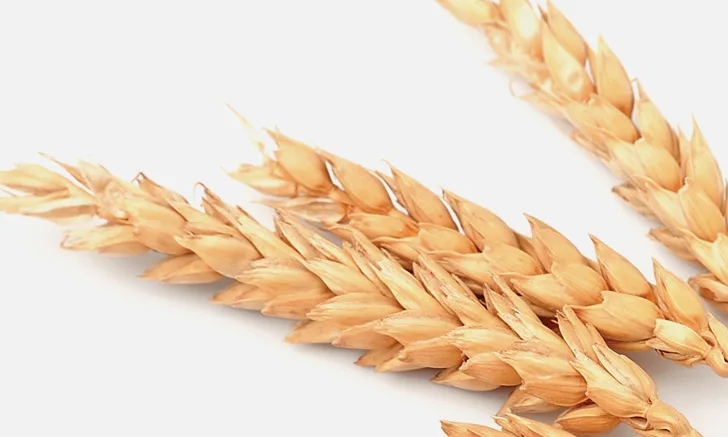Grain-Free Pet Foods: Fact vs Fiction

The good news—pet owners are increasingly focusing on their pets’ nutrition. The not-so- good news—they are reading about niche diets on the internet.
According to US Bureau of Labor and Statistics data, the pet food market is on a growth trajectory, with $29.5 billion spent on pet food in 2015,1 including in some growing niche markets such as grain-free diets.
Many pet owners believe grain-free diets are better for their pets because they assume they are more natural, carbohydrate-free, and less likely to result in health problems such as allergies, but this is not the case.
Better for Pets?
No credible evidence has been found showing grain-free diets are better for pets, nor do any nutritional foundations support this claim. Therefore, veterinary healthcare teams need to educate pet owners about the definition of nutrition and the difference between nutrients and ingredients.
Nutrition, Nutrients, & Ingredients
Nutrition is defined as the relationship of food and nutrients to health.Pets need nutrients to maintain health. Ingredients are the vehicles that provide the nutrients.Proper nutrient intake is essential for pets’ normal development, overall health, and disease management.Nutrients
Related ArticlesQuiz: Is Your Practice Nutrition-Friendly?Proper Nutrition: Is the New Emphasis a Fad?Tip 5 Tips for Good Nutrition
The Misperceptions
Pet owners frequently encounter misinformation about grains in pet foods. Here are some of the most common misperceptions:
Whole grains may be fillers in pet foods:
Filler implies the ingredient has little or no nutritional value,2,3 but whole grains do contribute vital nutrients such as vitamins, minerals, and essential fatty acids to pet foods.4 Various grain products also provide protein, which may be easier for the pet to digest than some proteins from meat. Most dogs and cats (>90%) can utilize and digest nutrients from grains normally found in pet foods.2-4
Grain-free pet foods are carbohydrate-free:
Grain-free pet foods typically contain carbohydrates from other sources such as sweet potatoes, which have a higher carbohydrate level than corn. Grains are carbohydrates, which are an important energy source, and one of the 6 basic nutrients (ie, water, protein, fat, carbohydrates, vitamins, minerals).
Veterinary teams must remember that the variety of grain-free diets on the market means a variety of nutritional profiles, which affects not only carbohydrates but also protein, fat, and other nutrients. Grain-free diets lower in carbohydrates may indicate a higher amount of fat and calories. Some grain-free diets merely substitute grain with highly refined starches (eg, potatoes, cassava) that may deliver fewer nutrients and less fiber than whole grains and are not considered cost-efficient.4 In other grain-free products, the grains are replaced with beans, peas, or lentils, which may provide carbohydrates but are not necessarily any better for pets than grains and may lead to GI upset.
Grains cause food allergies: Food allergies and insensitivities are abnormal responses to a normal food or ingredient.5 Food allergies in pets are uncommon (ie, <1% of skin disease, <10% of all allergies6,7) and grain allergies are even more uncommon. The significant factors in the few pets diagnosed with a food allergy are more likely animal protein (eg, chicken, beef, dairy),8 which reflects the commonality of ingredients in pet foods rather than their increased tendency to cause allergies.
Grains cause gluten intolerance: Celiac disease is an inherited autoimmune disease seen in humans that has been associated with hypersensitivity to gluten proteins in wheat and related grains such as barley and rye. Gluten intolerance is extremely rare in dogs and nonexistent in cats. Only one inbred family of Irish Setters is known to have manifested GI signs from consuming gluten.9
Conclusion
The growing grain-free category of the expanding pet food market is perpetuating the misperception that grain is bad for pets. Also, pet owners increasingly consider their pet’s diet as important as their own. Consequently, various human food trends have found their way into the pet food market, especially those believed to center on pets’ wellness. Remember, grain-free diets offer no more health benefits than a diet with grains, and each diet should be considered based on the overall nutrient profile rather than individual ingredients. However, some owners will adamantly believe their pet should eat only grain-free food; the veterinary team should follow pet food selection recommendations (see Resources) and apply the recommendations to the grain-free pet foods that are available. Veterinary team members need to focus on nutrition as medicine aimed at maintaining wellness, managing diseases, and strengthening the human–animal bond by helping pets live long, healthy lives.